Changing the way in which we phrase our service offerings—such as “Tuscan Table” instead of “Italian Buffet”—is a simple way of altering the consumer mindset and landing a sale. For those in search of a unique experience, there is cachet to the alliterative and percussive sound of two Ts together; to the specificity of a word like Tuscan. It’s a visual word; it has gravitas. Buffet, conversely, is a word the mouth has no recourse but to stumble upon, and too—Old Country Buffet no doubt bastardized the connotation entirely. It’s time to say good riddance to this overinflated “b” word.
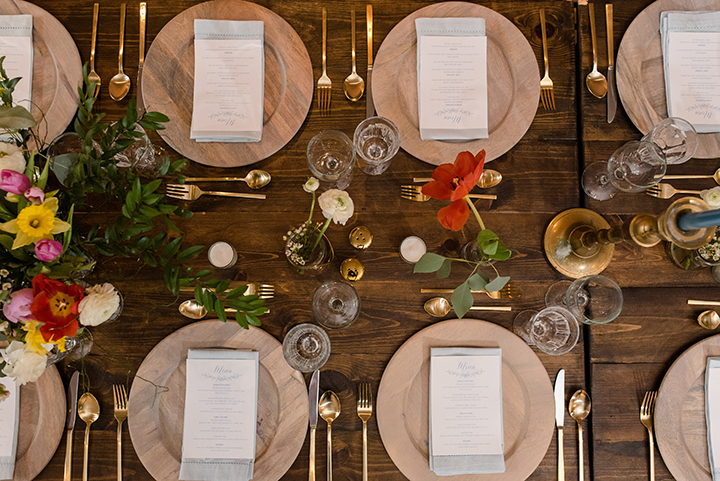 Another modification you might want to consider is when using the descriptive “catered dinner” or “plated meal” for off-premises bids. Swap outs such as Pop-up Dinner Party, Experiential or Collaborative Dinner, Backyard Supper Club, or Chef-guided Four-course Experience spur the consumer imagination (and pocketbook) to new heights. To us, it is off-premises catering. To the outside world, however, it is a meaningful and unique (and occasionally special, secret) food experience.
Another modification you might want to consider is when using the descriptive “catered dinner” or “plated meal” for off-premises bids. Swap outs such as Pop-up Dinner Party, Experiential or Collaborative Dinner, Backyard Supper Club, or Chef-guided Four-course Experience spur the consumer imagination (and pocketbook) to new heights. To us, it is off-premises catering. To the outside world, however, it is a meaningful and unique (and occasionally special, secret) food experience.
Pop! Goes their hearts
Consider this: In 2015, Eventbrite, an online ticketing and registration company, analyzed more than 40,000 food and beverage industry events scheduled into their system in 2014. Of those, the fastest growing trend was the pop-up dining experience—an increase, they assessed, of 82%. For up-and-coming chefs, Eventbrite says, one-night-only dining events are a way to build a brand “without necessarily being tied to a brick and mortar restaurant.” For established chefs who want to audition a new concept, it’s a testing ground with brag-worthy prestige awarded to diners who score a ticket. For catering companies hoping to fill a slower, less lucrative weekday night—it’s money in the bank.
How do you ease a pop-up dinner into your repertoire of services? Savvy caterers, such as SaltBlock Catering Company, Tampa, FL don’t wait for the phone to ring. Instead, the company has created its own series of events called “Back to the Table,” collaborating with others in the community to host gatherings. Truly win-win for both SaltBlock Catering and their partners, the company advertises dates and venues on its website, emphasizing community, family-style serving, and “dinner parties with a heart.” More on that later.
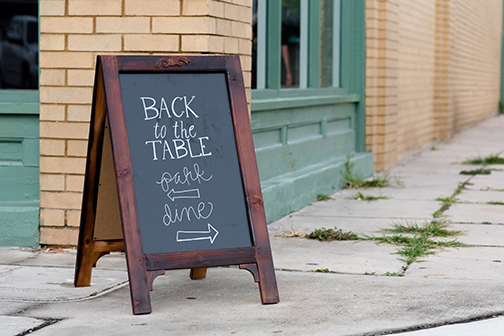
The experiential diner
Those consumers who are drawn to an exclusive dining experience are willing to pay more, too. This mindset doesn’t entirely rest on the laurels of the pop-up venue, of course. Invite a guest chef to your brick and mortar under the auspices of a one-night charitable event, such as what Chef Gavin Kaysen of Minneapolis’ acclaimed Spoon and Stable has been doing with his Synergy Series, and tickets will fly out the door. “We sold out in less than five minutes,” Chef Kaysen said. He cited that over 1,500 people attempted to buy the 80 available tickets at a price of $295 or $395 (for the chef’s table). “It sold so quickly, I convinced Chef Michael White [the first in the quarterly series of four visiting chefs] to stay an additional night.” Those tickets also sold out immediately.
But must events be held in a James Beard award-winning chef’s restaurant? Absolutely not. Four out of five people surveyed by Eventbrite said they would rather attend a pop-up in a non-traditional venue versus a restaurant. Additionally, they would prefer to buy tickets in advance that cover the entirety of the cost rather than pay at the end of a meal. To these consumers, the meal becomes, says Eventbrite, “a valuable experience…much like a concert or sporting event.”
Beyond the specialness of the venue, these occasions are a means to connect with a community of like-minded foodies, learn about new ingredients, and share an ephemeral commensality. It’s one of a kind. Ka-ching!
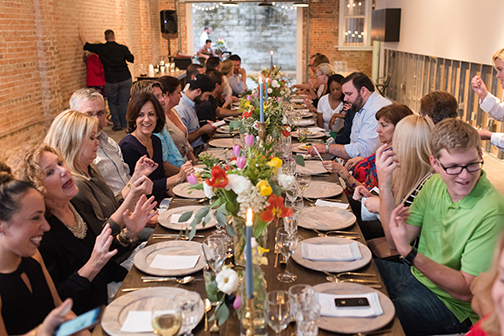
How it works
“We collaborate with organizations in the community by way of some very talented event planners,” says SaltBlock Catering’s co-founder, Scott Roberts. “They scope unique opportunities that will give diners a different perspective of our city—but also a different experience, an uncommon place that you wouldn’t normally eat dinner. We like to put people in places that throws them a visual curveball. It adds to the excitement of the night.”
Back to the Table, he says, was “born out of a desire to connect people with their community and to rediscover the significance of sharing a meal together. We felt the best way to do this was through a ‘pop up’ dinner format that creates a new experience for our guests, helping to break down boundaries and start conversations.”
Invitations are delivered to potential guests. Then, using social media, email campaigns, and word of mouth, awareness is created. Guests purchase tickets through SaltBlock’s profile on eventbrite.com. Of course, selling the tickets prior to the event is a spectacular way to be able to anticipate food costs and simplify service needs.
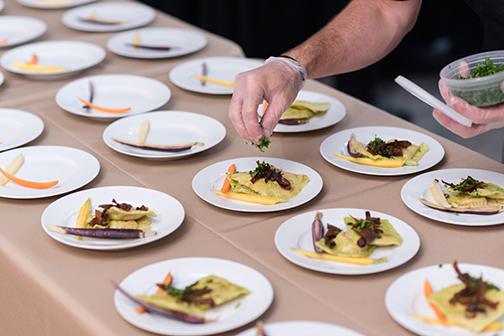
“Back of house” plating of the smoked carrot ravioli with heirloom baby carrot, chili-scallion oil, carrot chip
About the food: Says SaltBlock Executive Chef Rocco Taliani, “When creating the menu for Back to the Table, I want to make sure to highlight what is fresh, local, and seasonal in the Tampa Bay area, from locally-caught cobia to fresh Plant City strawberries. BTTT is all about bringing community together and I want that to be translated not only through the people but through the food as well. Each dish is created to give our diners something delicious with ingredients that they might be familiar with but [are] presented in new and exciting ways.”
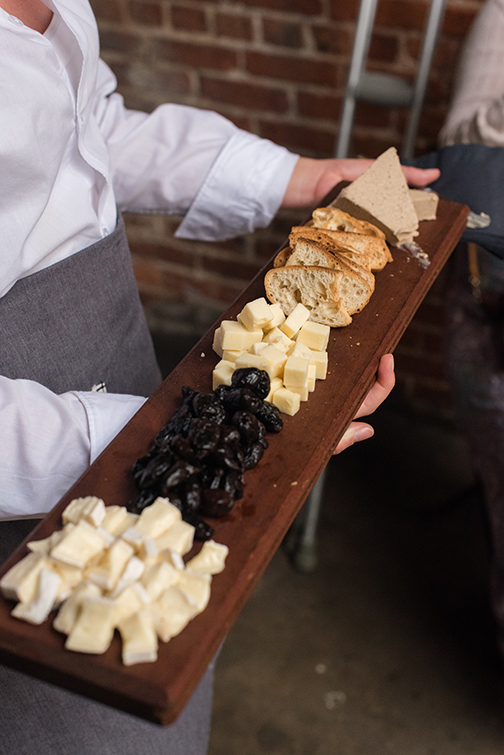
Charcuterie and cheese board: Foie gras mousse, triple crème brie, Carr Valley ménage, salt & pepper crostini, cured olives
Best, says Roberts, is that these special dining events are a creative outlet for the chefs. “Culturally, it keeps us fresh,” he says, “I can’t stress enough how important it is for your staff and your chefs’ creative outlet. It keeps the mind running and they’re not being bogged down on the daily prep.”
For the April 2016 event featured in this article, SaltBlock Catering co-created the pop-up with Amber Veatch Designs at the under-construction location of Foundation Coffee in Tampa Heights, FL, still a bare bones building but with beautiful brick walls, and an empty space perfect for a pop up. How’s that for secret and special?! Vendors Set Rentals, Wish Vintage Rentals, and Kate Ryan Linens also assisted in ensuring this Thursday evening event spoke to the senses with tasteful, luxe décor.
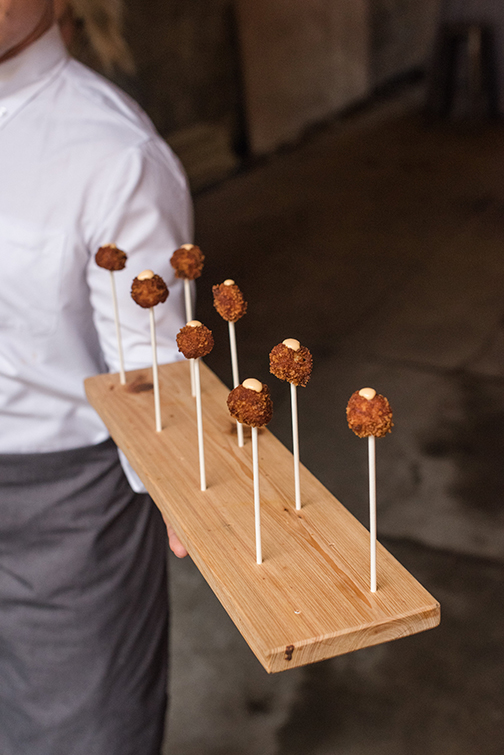
Deviled crab lollipop with hand-picked Florida blue crab, vine-ripened tomato puree, Texas Pete aioli
On the road, in the kitchen
“So yes, one of the big things is setting up a full production outdoor kitchen. You have to be really, really thorough in your planning process and make sure that logistically it’s in an area that allows you to effectively execute the dinner service,” says Roberts. “How far is the ‘kitchen’ from the serving space, are we inside, are we outside, are we bringing full production kitchen equipment or a propane fryer? Do we have use of electricity? Where are outlets, if any? It can really knock you off track if you aren’t properly prepared.”
And yet that’s also what is very rewarding about it, says Roberts. “It’s one of my favorite things about doing this type of event: logistically figuring out how to make it work and ensuring you are cooking restaurant quality food to order…without a traditional kitchen.
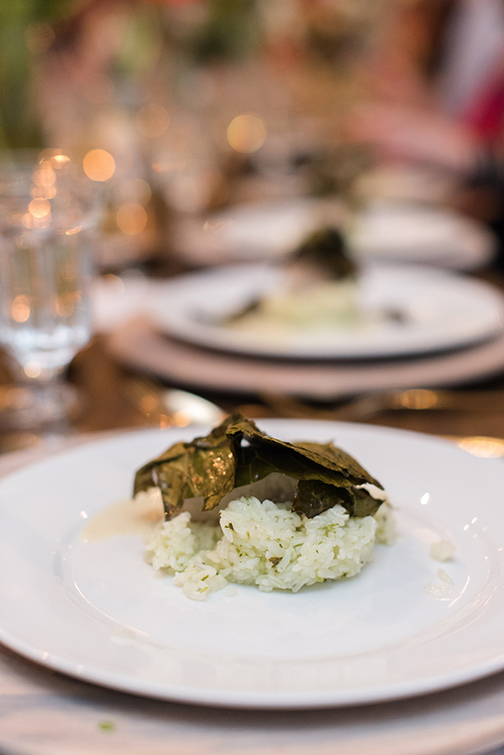
Curried packed cobia with crispy collards, herb-soaked sticky rice, Thai chili
“We rely on specialty equipment; we use sous vide a lot to prep our meats to a certain point so they only need to be finished with a sear or grill on site. We actually do a lot of seafood, a lot of raw dishes—things that can be prepped out beforehand.
“The set up is always different, but the equipment is always important. Butane burners, even specialty stands and tables. You need to ensure your cooks have the resources to get the job done.”

Tips for success
Mood is essential to the success of a handmade event (yet another way to say pop-up). Some events suggest that all guests wear a similar color, such as white or red, in order to promote initial camaraderie. Offer a beer or glass of wine upon entrance: a prop in the hand makes many less fidgety about meeting new people. Some suggest that guests swap or rotate seats after certain courses in order to keep conversation flowing. Ensure the chef and servers are visible and available at every course to offer details about the food and its preparation.
Take beautiful and detailed photographs that you can use as promotion after the fact.
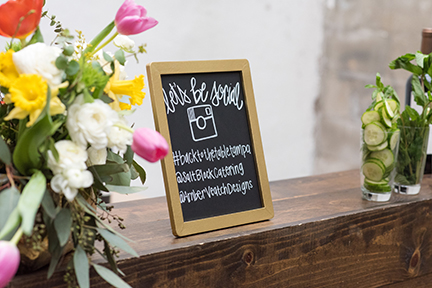
A visible hashtag enables guests to market your product to their own social followers
Create a hashtag for the event and put it on the printed menu or other messaging. Use the hashtag prior to sneak peek photos of potential dishes. At the event, your guests will have it at the ready to essentially market your product to their social followers. “Our events blow up on social media,” says Roberts.
Was the food and service wonderful? Are guests high-fiving the chef? Now is the time to ensure your guests are aware you can provide this type of service for more personal and special moments in their lives. Make sure your small parting favor or follow up emailed survey includes information about your traditional catering services such as weddings, corporate events, or lunchtime drop-off capabilities.
“Our catering business has absolutely grown because of the pop-up events,” says Roberts. “There is great perception in that we are able to pull off this style of event. You know, people are spending anywhere from $75 to $100 for a ticket. These are the people we really want to find. They appreciate the experience; they really appreciate hospitality.”
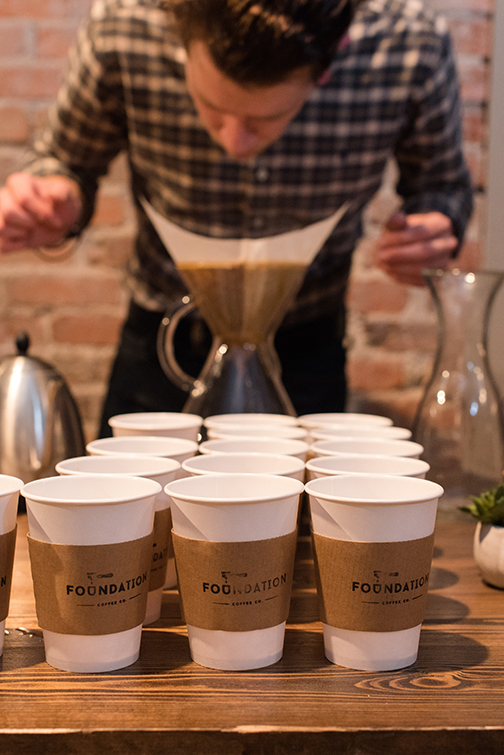
But also nice, says Roberts, is that the choice of off-premises venue is a way to support other local businesses. Foundation Coffee, as noted earlier, was a couple of months from opening, but says Roberts, “it was a good opportunity for them to get their name out and about as they opened their business.”

Plant City strawberry preserve, macerated strawberries, vanilla crème anglaise



